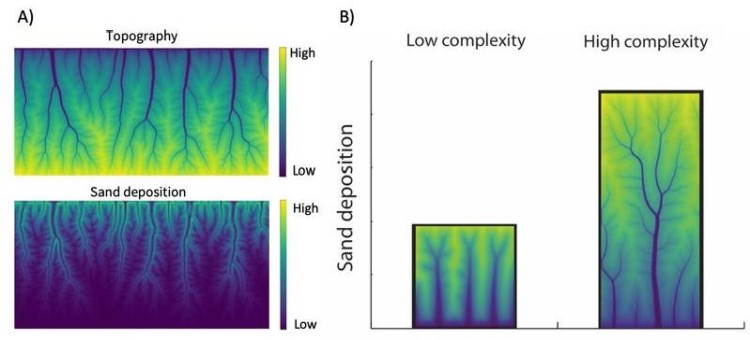L. Cornacchia1*, R. C. van de Vijsel1,2, D. van der Wal1,3, T. Ysebaert1,4,5, J. van de Koppel1,2
1 Royal Netherlands Institute for Sea Research, Department Estuarine and Delta Systems, and Utrecht University, Yerseke,
2 University of Groningen, Groningen Institute for Evolutionary Life Sciences
3 Faculty of Geo-Information Science and Earth Observation (ITC), University of Twente
4 Ecosystem Management Research Group, University of Antwerp
5 Wageningen Marine Research, Wageningen University & Research, Yerseke, Netherlands
Introduction
The adaptability of tidal marshes to sea-level rise relies on the efficient delivery of sediment within the marsh, allowing them to accrete vertically. Crucial for this delivery is the presence of a creek network that mediates the exchange of water and sediments between the sea and the marsh interior.
To what extent plants and their characteristics affect creek formation and influence sediment delivery by concentrating the tidal flow into the creeks, remains unclear. In this study we investigate whether sediment delivery is directly controlled by plant characteristics or indirectly mediated by the effect of vegetation on creek network complexity.
Methods
Here we use an idealized numerical model that couples the dynamics of water flow, vegetation, morphology and sediment transport, to describe the effect of vegetation outside the creeks on sediment transport and deposition onto the marsh platform. We compared different vegetation types, with contrasting effects on above-ground friction and below-ground sediment stabilization. Then, we quantified the resulting intertidal drainage structure and sediment deposition patterns to separate the direct effect of plant characteristics on sediment deposition from their indirect effect via creek geometry.
Results
We found that creek network complexity, rather than plant characteristics, determines the efficiency of sediment delivery in the marsh. While different plant characteristics do not directly affect sediment delivery, they do so indirectly by leading to the formation of simple (linear) or complex (highly branched) creek systems. Once a certain creek network is formed through plant-flow interactions, its planform geometry determines both the amount of sediment deposited and the transport distance in the marsh. Overall, this suggests a more efficient sediment delivery with increasing drainage pattern complexity (see figure below). Our results point out the need to preserve spatial complexity in salt marshes to ensure the resilience of these valuable coastal ecosystems.

Figure 1 A) Top view on simulated drainage topography and sand deposition patterns. Outflow occurs through the upper boundary; the other boundaries are closed. B) Difference in total sand deposition between low-complexity and high-complexity creek networks.
I. Surname1*, F.N. Another-Surname2 , Y. Next-Surname2
1 University Name, Country; 2 Organization Name, Country
* Corresponding author: mail.name@organization.org


